Online recommendations offer numerous benefits by enhancing the user experience and driving business growth. These recommendations help customers discover products and content tailored to their preferences, increasing satisfaction and engagement. By analysing user behaviour and preferences, businesses can provide personalised suggestions, leading to higher conversion rates and customer loyalty. Additionally, online recommendations can streamline the decision-making process for users, saving them time and effort. For businesses, this targeted approach not only boosts sales but also improves inventory management and marketing efficiency. Ultimately, online recommendations create a win-win scenario by delivering relevant content to users while maximising business performance.
Recommendations examples
Personalised recommendations has played a pivotal role in the success of some of the most popular digital brands. For example, e-commerce platforms like Amazon use recommendation algorithms to suggest products that align with a customer’s browsing history and purchase patterns, increasing the likelihood of additional sales. Similarly, streaming services like Netflix recommend shows and movies based on viewing history, keeping users engaged andsubscribed.
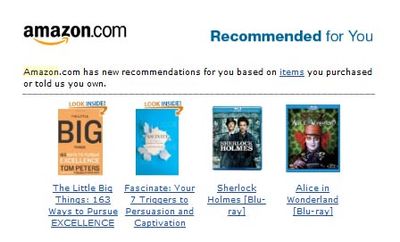
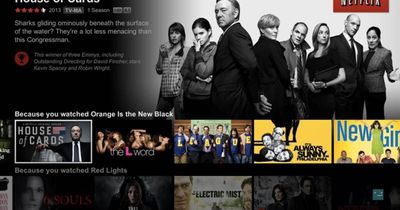
In addition to recommendations related to product-sales, brands also use this feature to help their customers get relevant help/support quickly. For example, many brands like McDonalds show the top asked questions under their FAQ section to reduce time in searching for answers.
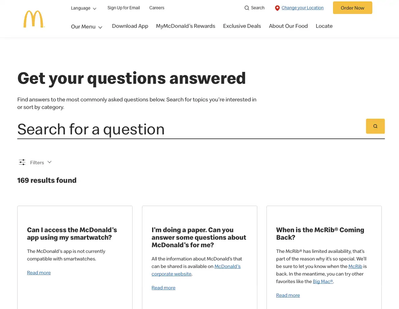
Adobe Target Recommendations
Adobe Target’s Recommendations functionality is a powerful tool for delivering personalised content and product suggestions to users, enhancing their experience and driving engagement. Utilising advanced algorithms and machine learning, Adobe Target analyses user behaviour, preferences, and interactions to provide relevant recommendations in real-time. This functionality allows businesses to tailor their offerings to individual users, increasing the likelihood of conversions and customer satisfaction.
Here’s an example from Vodafone Germany website where Adobe Target powers recommendations on the homepage. When a visitor comes for the first time, they see the top sold phones first. If they show interest in a phone and return back then the same recommendation module also shows the most recently viewed phone. Adding this recommendation module helped Vodafone Germany cut the decision time for its visitors and resulted into a higher engagement and conversion rates.
Setting up Adobe Target Recommendations
Setting up Recommendations using Adobe Target requires a few steps which we’ll discuss in sections below:
Step 1: Uploading Product Information
Before diving into the technical details of setting up Recommendations within Adobe Target, it’s essential to start with comprehensive product data. This includes information such as product names, descriptions, images, prices, and other relevant attributes. Organise this data into a CSV file, which will serve as the foundation for your recommendation activities. Adobe Target offers multiple integration options to populate your catalog. These options can be used in combination to update different items in the catalog or to refresh various item attributes at different frequencies.
We can pass product information (called entities in Adobe Target) using multiple approaches:
-
CSV files in Catalog feed (Reference : Pass entities using CSV file)
-
Google Product Search feed format in Catalog feed (Reference : Pass entities using Google Product Search file)
-
Adobe Analytics product classifications in Catalog feed. (Reference : Pass entities using Adobe Analytics product classification)
-
Entities API (Reference : Entities API developer documentation)
In this example, we are uploading entities using a CSV file.
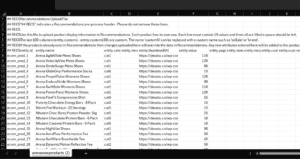
With your CSV file ready, log in to your Adobe Target account and navigate to the Feeds section. Follow the prompts to upload your product feed, ensuring that the data is accurate and up to date. Adobe Target will use this information to power its recommendation algorithms.

Reference: How Do I Use Feeds in Target Recommendations? | Adobe Target
Step 2: Creating Collections
In Adobe Target Recommendations, collections refer to groups of items that are organised based on specific criteria to tailor recommendations more effectively. Collections allow businesses to create subsets of their product catalog or content inventory to target different audience segments or achieve particular marketing objectives. For example, a collection might include only the top-selling products, items within a certain price range, or content related to a specific category. By using collections, marketers can ensure that the recommendations presented to users are highly relevant and aligned with their interests or the current marketing strategy.

Reference : How Do I Use Collections in Recommendations Activities? | Adobe Target
Step 3: Defining Recommendations designs
Visual presentation plays a crucial role in capturing users’ attention and driving engagement. In Adobe Target Recommendations, designs refer to the templates and layouts used to display personalized recommendations on a website or within an application. These designs control the visual presentation of recommended items, ensuring they are appealing and consistent with the overall look and feel of the site or app. Designs include various elements such as product images, titles, prices, and call-to-action buttons. Marketers can customize these designs to fit their brand’s aesthetic and optimize them for different devices and screen sizes. By creating effective designs, businesses can enhance user engagement with recommendations, making it easier for users to discover and interact with relevant products or content.
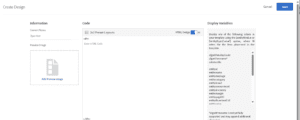
Reference: How Do I Create a Design in Recommendations? | Adobe Target
Step 4: Choose algorithms (or criteria):
In Adobe Target Recommendations, criteria refer to the rules and conditions used to determine which items should be recommended to users. Criteria are based on various factors such as user behaviour, preferences, contextual information, and business goals. They define how recommendations are generated and what data points are considered in the process. For example, criteria can include recommending items based on browsing history, past purchases, similar user behaviours, trending products, or items frequently bought together. By setting specific criteria, marketers can tailor recommendations to be more relevant and personalised, enhancing user engagement and increasing the likelihood of conversions.
Adobe Target supports multiple types of algorithms. Lets review some of the most common ones.
User-based algorithms
In Adobe Target, user-based recommendation algorithms are designed to provide personalised suggestions based on individual user behaviour and preferences. These algorithms analyse a user’s interactions on the site, such as the products they have viewed or shown interest in, to tailor the recommendation experience.
Adobe Target specifically offers two primary user-based algorithms ,
Recently Viewed
Recommended For You
These user-based algorithms are essential for creating a personalised shopping experience. They help keep users engaged by showing them items that are directly relevant to their recent activities or inferred preferences. By leveraging “Recently Viewed” and “Recommended for You” features, businesses can improve user satisfaction, encourage repeat visits, and ultimately increase sales. These strategies are particularly effective in retaining user interest and boosting conversion rates, as they cater specifically to individual user needs and behaviors.
Most Recently Viewed Recommendations
The “Recently Viewed” algorithm focuses on the user’s recent interactions with products. This algorithm tracks the items that a user has viewed during their session and recommends these products back to them. The idea is to remind users of their past interests, making it easier for them to revisit and potentially purchase items they have considered. This is particularly useful for users who might need a reminder of products they were interested in, helping to recover potential sales by making it easy to return to items they previously explored.
Use-case: An e-commerce site displaying a “Recently Viewed Items” section on the sidebar or at the bottom of the page allows users to quickly find and reconsider products they have browsed through earlier, increasing the chances of conversion.
For this type of recommendation, we’ll focus on targeting users based on their recent browsing activity. Pass the “entityID” as a target parameter on the product detail page to track which products users have viewed. Then, create a form-based recommendation activity in Adobe Target with the criteria setting “Algorithm Type” to “user-based” and “Algorithm” to “Recently Viewed Items”. This will ensure that users are presented with products they’ve shown interest in during their current session.
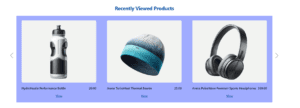
Sending entity-view data to Adobe Target using WebSDK:
alloy("sendEvent", {
renderDecisions: false,
data: {
__adobe: {
target: {
"entity.id": "arena_prod_12"
}
}
}
});Sending entity-view data to Adobe Target using AT.js:
targetPageParams = function() {
return {
"entity.id": "arena_prod_12"
};
};Reference : How to pass behavioral information in Product Detail Pages
Popularity based algorithms
Popularity-based recommendation algorithms in Adobe Target leverage the collective behaviour of all users to highlight products that are widely favoured or frequently interacted with. These algorithms provide insights into what is trending or popular, helping to guide user attention to items that have high engagement.
Adobe Target includes several types of popularity-based recommendations:
Most Viewed Across the Site
Most Viewed by Category
Most Viewed by Item Attribute
Top Sellers Across the Site
Top Sellers by Category
Top Sellers by Item Attribute
These popularity-based algorithms in Adobe Target are designed to attract user attention by highlighting what is currently popular among the broader audience. By showcasing products that are most viewed or top sellers, businesses can drive engagement and increase conversions by leveraging social proof and user trends. Whether it’s displaying trending products site-wide, popular items within specific categories, or best-sellers by particular attributes, these algorithms help guide users to items that have broad appeal and high engagement, enhancing their shopping experience and boosting sales.
In this article, we’ll learn about “Most Viewed Across the Site“ and “Top Sellers Across the Site“.
Most Viewed Across the Site
The “Most Viewed Across the Site” algorithm identifies and recommends products that have the highest number of views from users across the entire platform. This algorithm aggregates data to showcase items that are currently attracting the most attention site-wide, making it ideal for highlighting trending or popular products. This approach is effective for displaying universally popular items that are likely to appeal to a broad audience, including new visitors with no interaction history.
Use-case: An e-commerce homepage featuring a “Most Viewed Products” section can capture user interest by presenting products that are currently popular with a large user base, driving curiosity and potential purchases.
To highlight popular products based on overall user engagement, pass the “entityID” as a target parameter on the product detail page. Create another form-based recommendation activity, this time in criteria setting “Algorithm Type” as “Popularity-Based” and “Algorithm” as “Most Viewed Across the Site”. This will showcase products that have garnered the most attention from your audience, helping users discover items that are trending on your website.
Top Sellers Across the Site
The “Top Sellers Across the Site” algorithm identifies and recommends products that are the best-selling items across the entire platform. This algorithm focuses on sales data to highlight products that are frequently purchased by users site-wide. It is effective for promoting products with proven popularity and sales success, appealing to users’ trust in best-selling items.
Use-case: Featuring a “Mostly Bought” section on an online store’s homepage that showcases the best-selling products across all categories can attract users by presenting them with items that have high sales volume and user trust.
After users complete a purchase , In your order details page, insert the mbox script following the model below and pass the required parameters to track which products they’ve bought. Similar to the previous steps, create a form-based recommendation activity with the criteria setting “Algorithm Type” to “Popularity-Based” and “Algorithm“ to “Top Sellers Across the Site”. By recommending products that align with users’ purchase history, you can encourage repeat purchases and increase customer loyalty.
Sending purchase data to Adobe Target (WebSDK):
alloy("sendEvent", {
renderDecisions: false,
decisionScopes: ["orderConfirmPage"],
data: {
__adobe: {
target: {
"orderId": 202454,
"orderTotal": "1399",
"productPurchasedId": "arena_prod_20,arena_prod_21,arena_prod_25"
}
}
}
});Sending purchase data to Adobe Target (AT.js)
<script type="text/javascript">
adobe.target.trackEvent({
"mbox": "orderConfirmPage",
"params":{
"orderId": "202454",
"orderTotal": "1399",
"productPurchasedId": "arena_prod_20,arena_prod_21,arena_prod_25"
}
});
</script>
Further information on passing sales data on Order complete page:

Reference : When a purchase event occurs, pass the identity of the purchased item or items. See Track Conversions in the given article :
Can I Implement Target without a Tag Manager? | Adobe Target
Cart based algorithms
Cart-based recommendation algorithms in Adobe Target are designed to enhance the shopping experience by suggesting products based on the contents of the user’s cart or viewing history. These algorithms analyze purchase and browsing patterns to offer complementary or similar items that other users have bought or viewed, encouraging upselling and cross-selling opportunities.
Adobe Target includes several key cart-based recommendation algorithms:
People Who Bought These, Also Bought
People Who Viewed These, Also Bought
People Who Viewed These, Also Viewed
These algorithms support various strategic goals:
Upselling and Cross-Selling: By recommending complementary products that other users have purchased, businesses can increase the average order value and encourage customers to buy additional items.
Product Discovery: Suggesting items that other users viewed or bought provides users with alternative options and helps them discover new products they might not have considered.
Enhanced Shopping Experience: Offering tailored suggestions based on similar user behaviorus makes the shopping experience more engaging and personalised, improving user satisfaction and potentially leading to higher conversion rates.
In this blog, we’ll learn about how to configure “People Who Viewed These, Also Viewed“ algorithm.
People Who Viewed These, Also Viewed
The “People Who Viewed These, Also Viewed” algorithm provides recommendations based on the viewing habits of users who have looked at similar products. This algorithm identifies other items that users have frequently viewed after looking at the same initial product, offering insights into related interests.
Ideal for encouraging users to explore a wider range of products, this algorithm helps them discover items that other viewers have found interesting or relevant.
Use-case: On a fashion retail site, if a user is viewing a specific dress, the system might recommend other dresses or outfits that have been frequently viewed by users who looked at the initial dress. This encourages users to browse and compare different options, potentially leading to more engagement and higher likelihood of finding a product they want to purchase.
In order to configure this algorithm, pass “cartIds” as a target parameter on the cart page to track the products currently in a user’s cart. Create a form-based recommendation activity in Adobe Target with the criteria set to “cart-based” and “people who viewed these, also viewed.” This will present users with additional products that complement their current selections, increasing the likelihood of upsells and cross-sells.
Passing data for cart-based recommendations (WebSDK)
alloy("sendEvent", {
renderDecisions: false,
data: {
__adobe: {
target: {
"cartIds": "arena_prod_21,arena_prod_17,arena_prod_10"
}
}
}
});Passing data for cart-based recommendations (AT.js)
targetPageParams = function() {
return {
"cartIds": "arena_prod_21,arena_prod_17,arena_prod_10"
};
};Reference : How to pass behavioral information in Cart Pages
Conclusion
Implementing Adobe Target recommendations on your digital properties can significantly enhance the user experience and drive conversions. By following the step-by-step guide outlined above, you can leverage the power of personalised recommendations to delight your audience and achieve your business goals. Experiment with different recommendation types, monitor performance metrics, and continuously optimize to ensure that your website delivers relevant and engaging content to every visitor. ging upselling and cross-selling opportunities.
Get Experience Optimisation Insights
Sign up and get the latest Experience Optimisation insights and tips straight to your inbox.
About The Authors
Rajneesh Gautam

Vaibhav Mathur
Vaibhav Mathur is a Web and App Analyst and Multi-Solution Consultant, with a proven track record for optimising digital experiences to achieve measurable outcomes. Specialising in Adobe Target, Adobe Analytics, Optimizely, and Tealium CDP, Vaibhav enhances customer journeys with expertise and precision.





